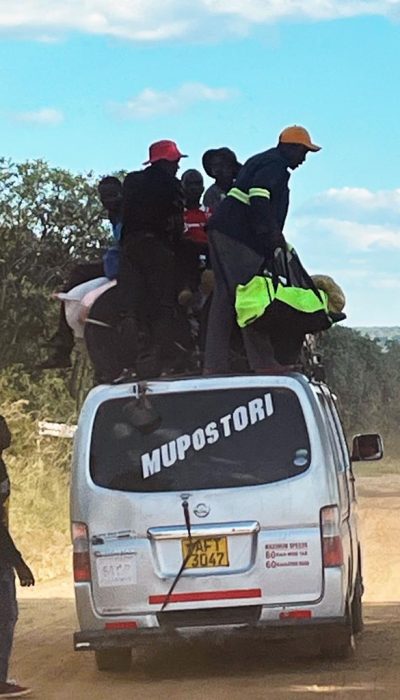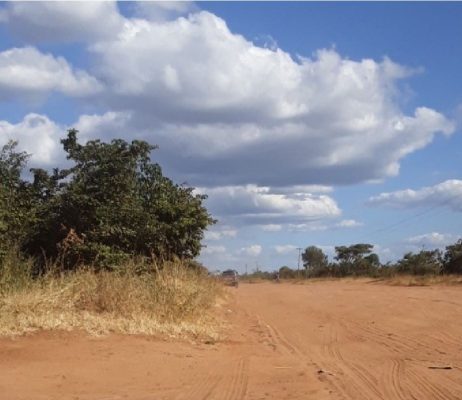Weekend Outing to Gokwe April 2023
After no activity during the COVID pandemic, on the Friday 15th April 2023, enthusiastic members of the Tree Society of Zimbabwe traveled to Gokwe to see the special vegetation associated with deep Kalahari sands. Most of the Kalahari sands are to be seen around Hwange National Park and surrounds. However, the forests on the Mapfungautsi Plateau do have Kalahari sands and just happen to be the closest to Harare. So, it was with some anticipation that our Society members set off for our accommodation in Gokwe which is a small town on the northern boundary of the sands. We were going to stay at Pumba Safaris where we were going to eat and sleep. This was a place none of us had been to before and thus we had our fingers crossed when we arrived. However, it turned out to be ideal for our needs.
The last trip to see special trees was undertaken in 2018 to Seldomseen in the Eastern Highlands of Zimbabwe. This trip is fully documented elsewhere.
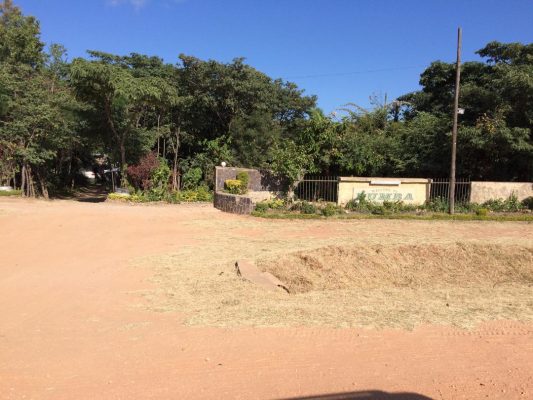
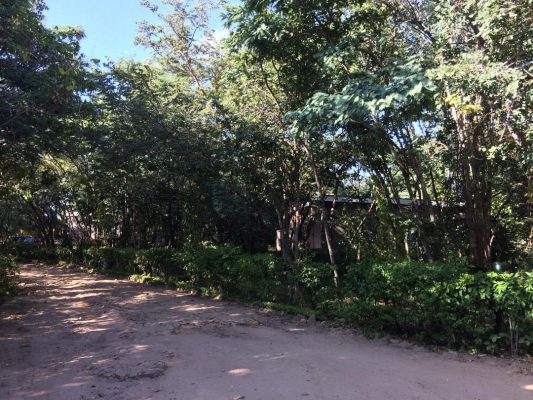
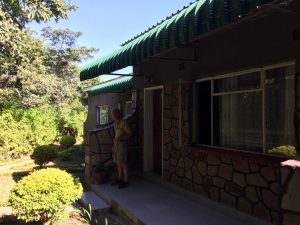
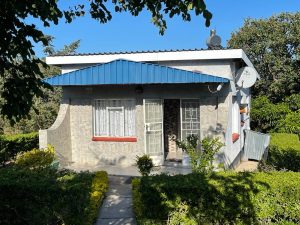
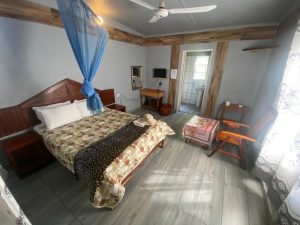
TREE SOCIETY VISIT TO THE MAPFUNGAUTSI PLATEAU
AN OVERVIEW
TEXT AND PHOTOS BY ROB JARVIS
It was with some anticipation that our Society set off for Gokwe and the Mapfungautsi Plateau, over the weekend of 15th to 18th April. The expedition was well organised by Frances Lovemore and Peter Morris and we were taken to a beautiful forest managed by the Forestry Commission not too far away from the urban centre of Gokwe. In my own case I had been visiting this area regularly from the late 1970’s until about 2007 and had seen the area grow from a beautiful, sparsely populated well-wooded plateau and lowveld-like vegetation down the escarpment towards the Sengwa and Sanyati river basins, into a centre for cotton production and sawmilling with ginneries, supermarkets, lodges and all manner of economic activity seen everywhere. We caught just a glimpse of the Lowveld, as we went searching for a mountain on the way to Chireya that is reputed to have a deep ravine cut through the red sandstone cliffs by endless herds of elephants seeking grazing and respite on the cool plateau top. Unfortunately, the road deteriorated so badly once the tar ended we abandoned that trip. However, we did go into the magnificent miombo woodland forest surrounding the Forestry Commission’s local headquarters and saw some absolutely spectacular Msasa trees that towered above everything else in sight.
The tree on the right we called the Abacus tree and you can probably estimate its age by allocating a human generation of 25 years to each of the galls on the main stem. Saves murdering the tree to count the rings.
The locals of Gokwe are very welcoming and when a breakaway group of us decided to return back via the Njelele road, which wends down the escarpment to Empress Mine and thence to the banks of the Umniati River, we met this entrepreneur Alexander, who is a butcher operating in Gokwe town and he buys cattle far from town and then ships them up to slaughter where the market is. This particular spot where we stopped had breath-taking views down into the upper catchment of the Sanyati River. The trees were magnificent, virtually untouched by mankind with mountain acacia, Mufuti, Msasas and Munondo dominant. Bird life abounded just where we stopped.
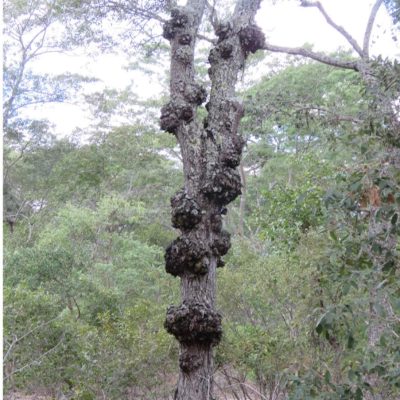
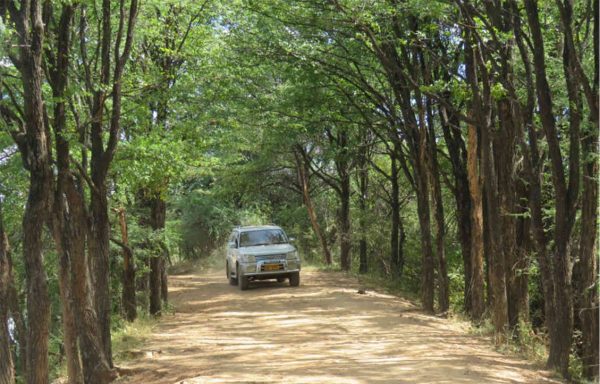
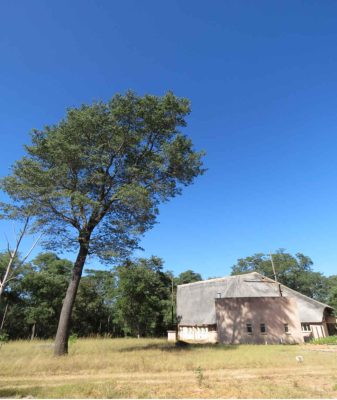
On one of our expedition days we tried to finish off the activities by seeking the Mapfungautsi Fossilised Forest. Unfortunately, it got rather late and most vehicles turned back and only ours containing Ryan, myself, Sheila, took the last corner and met an excellent guide called Peter who took us to the fossilised forest only a tantalising kilometre or two from where all the other cars had stopped. Anyway, the petrified logs were well worth seeing and most had a covering of lichens, giving them a greyish-green look. Somewhere along the way we had read on the internet and heard from locals that these rocks were green. However, it appears that the area with actual green rock tree logs do in fact occur, due to chromium compounds accrued in their fossilisation and these were to be found further down the Sengwa River basin just before it leaves the escarpment.
And so there is no doubt that we shall have to go back, with more time on our hands and a better idea of where we start the expedition so that we fully investigate the 400 million year-old trees that once lived hereabouts. Apparently they are similar to current pines and the probability is that the continent as it then was geologically positioned much closer to the South Pole and the climate was temperate. I know from my early days of going to Gokwe in the 1980’s that one of the roads I frequented passed through an area of petrified logs that were strewn about either side of the road. These logs looked very different to the ones we saw this past month. So we also have to find that place again.
The Mapfungautsi Plateau and its surrounds are a fascinating area, whether it is the endlessly deep Kalahari sands that dominate it, with alternating wide open vleis flanked by rolling miombo woodland dominated ridges, or the lowveld approaches with patches of mopane woodland still dominating the sodic soil areas. And huge baobabs, pod mahoganies and Sterculia standing as trophy trees in every direction.
The cattle are fat and healthy, the people friendly and there is much to interest the explorer in all of us in venturing to the far corners of this amazing plateau. Around the Sengwa Dam we found a multitude of small critters living in or around the vegetation bordering the open waters. Reed frogs, paper wasps, grasshoppers, foam nests of mantids, dragonflies, butterflies of every description, bag worms, termitaria, were all there.
Bird life was a bit sparse but maybe an earlier start to each day would reveal more diversity in this department.
In Gokwe town I found that punctures could be fixed by squirting some pre-cooked sadza into the tubeless tyre. It is still plugged as I speak. We also found that no matter how heavily laden a combi, bus or truck is, it can still fit quite a few more passengers right on top of everything else lashed to the vehicle.
A big thank you to our lodge in Gokwe and the organisers for a fun weekend away from the turmoil and stress of Harare and Bulawayo’s urban sprawl.
TREE SOCIETY: MAPFUNGAUTSI TRIP FROM BULAWAYO
BY DI CHARSLEY
Cathy and I set off on our trip armed with plenty of hot water (for tea) to survive the journey which was a whole sight better than travelling to Hwange. When we got to Gokwe the Harare group had already arrived and although they spoke this foreign archaic language, we found them friendly and welcoming.
They were champing at the bit so we set off immediately to hunt trees at a nearby dam. There I was honoured to meet the legendary Meg. Torn between travelling in the light and enjoying the sunset, we got back to the lodge in time for supper and cheap beer in large bottles. It seems that the lodge’s clients usually drink straight from the bottle as the glasses were a bit smudgy. The staff seemed overwhelmed by the size of our group and we were not sure whether there was enough food to go round, but by the next day they had their mojo and there was plenty of food from there on. The rooms were interesting and presented their challenges, but nothing insurmountable—all part of an African adventure.
For the next two days, guided by forestry staff, we happily explored the Mapfungautsi Forest. As a beginner I was glad to have the help of new friends who showed me distinguishing features and increased my botanical vocabulary to include names like Kalahari Green-bubble. We went on roads less travelled which usually accommodate nothing wider than a donkey cart or had deep sand to test our drivers’ skills. We found ourselves at a sometime waterfall, vleis with bracken and Edenic forest cathedrals that pulled at the heart. A few even found the petrified forest.
Grateful thanks go to the Morrises, the Hydes and Tony for a memorable, well organised trip. Definitely on the do-again list.
Editor’s note: One of the first stops we made as a complete group was to botanise around a waterfall. Unfortunately, there was no water and so most of the party spent some considerable time looking for the waterfall. A practical “Where’s Wally” so to speak. We had hoped, given the very dry region that Bulawayans inhabit, that they would home in on the water of the waterfall, without difficulty. However, they proved equally inept at finding it. It is quite likely that everyone you can see in this photo, come January, is actually standing in the surging water of the waterfall as it speeds to the precipice. A good reason to go back to Gokwe, during the peak of the rains and tick off the waterfall.

MAFUNGAUTSI TREE SOCIETY WEEKEND OUTING DAY 1 & 2
15th – 18th April 2023 by Tony Alegria
On the afternoon of the day we arrived, Mark, Jan, Ryan and I stayed back at Pumba Safaris to list the trees at the accommodation site whilst most of the other members took off to see Sengwa Dam that supplies Gokwe with water. Rob and his wife Sheila went elsewhere to get a puncture fixed.
There are many trees at the site including terminalia which were either Terminalia sericea or Terminalia brachystemma – the debate of which-was-which or were they the same would go on for a couple of days. On arrival at Pumba Safaris, Cathy Sharp had been excited at having seen what she thought was a Diospyros batocana. However, during our afternoon of botanizing we found more of these trees and finally found one with fruit – the Diospyros batocana turned out to be Diospyros kirkii!
The next day was Sunday 16th, and we began by picking up two guides from the Forestry Office and then drove south into the Kalahari Sand Forest. After about 1 km beyond the one and only one set of traffic lights we were on a wide dirt road where it was often best to drive in the ditch on either side of the road as it was a lot smoother.
The first stop was a dry waterfall which dropped into a deep gorge. We were surrounded by the people who lived there, and we were offered bush fruit to sample, these were from the Vangueria infausta. Within the gorge and on both sides of the waterfall were many species of trees and shrubs. Some of us descended into the gorge and the rest wandered about on both sides looking for different species of trees and shrubs.
The area had a lot of botanical interest. Meg was presented with many specimens to identify which kept her rather busy – she was our sitting down guru! Even Mark consulted the guru on many occasions, sometimes to seek confirmation on a species and at other times because he too was baffled. Here we found: Euclea schimperi and E. divinorum; Psydrax livida which wasn’t hairy and looked rather different from what we see around Harare, Pavetta schumanniana which also looked different to what we are used to, so perhaps it was something else!
We then proceeded onto the forest area, the dirt road being the boundary between the forest and the local people. As soon as we entered the forest, Mark got very excited about something and we had to stop rather suddenly, he had spotted something special – Paropsia brazzeana. After photos had been taken and we had looked around at the trees and vegetation, we moved on! Strangely enough Paropsia brazzeana was seen all over the place in the Kalahari sands. We then moved forward until someone spotted something of interest and all six vehicles came to a stop and botanizing took place. At almost every stop, some specimens were collected by a few of us – Rob Kelly was an avid collector! And so we moved on deeper and deeper into the forest. At one point we had to make a small diversion around an obstacle which necessitated sawing off a branch and a stump. At other times someone had to hold a branch out of the way whilst all the vehicles passed by.
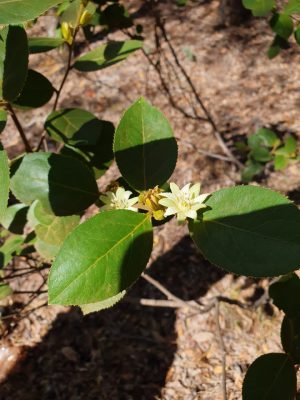
On one of the many stops I found a small tree with three veined elliptical leaves with a sharp point – it was my first Strychnos pungens! Later on the fruit was seen on bigger trees – monkey oranges with a really weird looking greeny-blue colour. We also came across a couple of trees that were new to me but very much at home on the Kalahari sands, one was the Bauhinia macrantha which is similar to the Bauhinia petersiana but a bit more like a tree and has slightly different flowers. A very common tree was the Baphia massaiensis, Sand camwood, as well as the Baikiaea plurijuga. Zambezi teak. We also came across quite a few Schinziophyton rautanenii. Manketti trees with yellowing leaves which were already dropping off, their jizz just made them stand out amongst all the other trees!
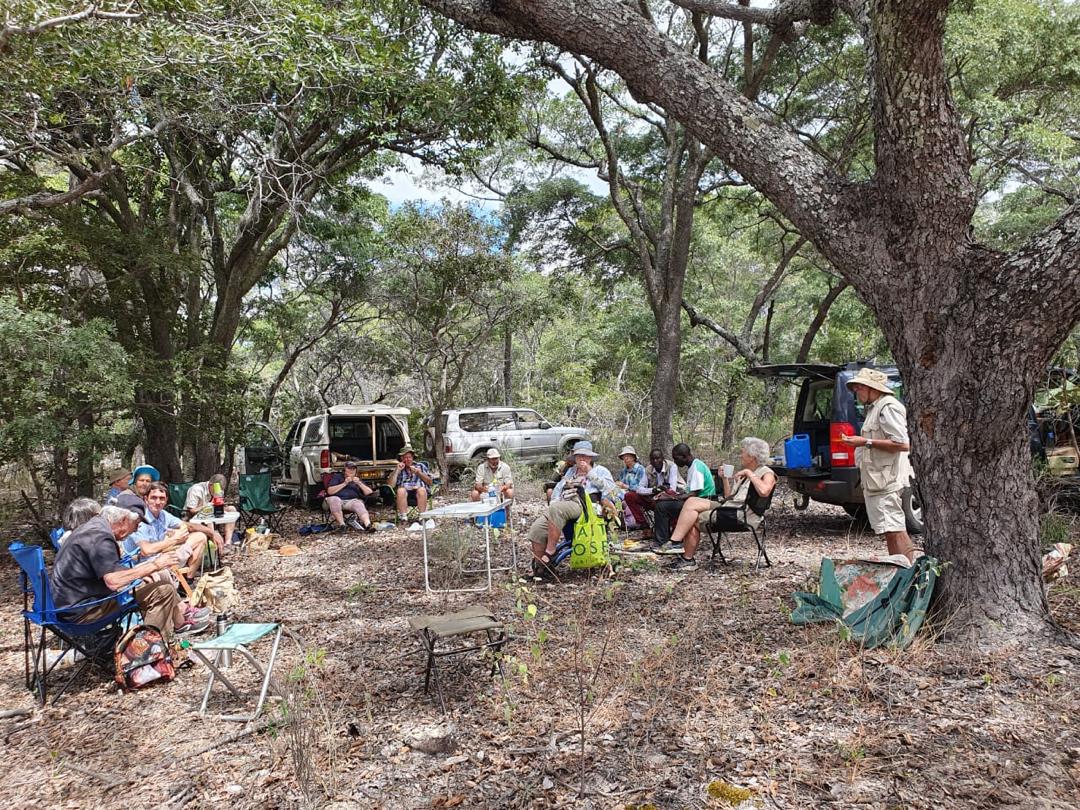
All 20 of us (including the 2 guides) sat around in a big circle for lunch. During this time, Peter Morris took out his maps and selected a route for us to follow. Thereafter we proceeded further along into the forest and later on returned to the main dirt road via a different route.
On the way back to our accommodation, most of us went to the dam to look at a strange acacia that had been seen the day before. Of course there was a lot of other stuff to look at too! More specimens were collected from the acacia which had different sized thorns and rather thick slightly curved pods. Hopefully Meg and Mark will be able to identify this acacia at the National Herbarium.
There were a few Ormocarpum kirkii. Curled caterpillar-pod at the dam as well as in and around Pumba Safaris – the first plants we came across were behind Room 1. At the dam I collected the pods of the Maerua angolensis and on the way back from the dam we found several bushes/trees of interest: A Commiphora sp. with no leaves at all but had spines; a Pterocarpus rotundifolius martinii which has many leaflets: Asparagus laricinus which looked more like a cat’s tail then the wild asparagus we see around Harare.
Every evening before, during and after dinner, Mark and Meg looked at the specimens. During this time I was amazed to see how many ladies were drinking bombers (beer in big bottles!) along with the guys! I think Meg was the ringleader! After all the running around during the day some of us enjoyed an early night
A daily feature of the trip was Mark and Meg trying to identify samples collected by themselves or other members. These sessions took place wherever we had lunch or in the evenings before and after dinner. Here whatever was positively identified were discarded whilst whatever needed further confirmation or were unknown were pressed for later identification at the National Herbarium based in the National Botanical Garden in Harare
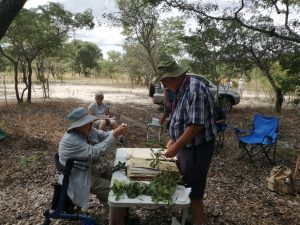
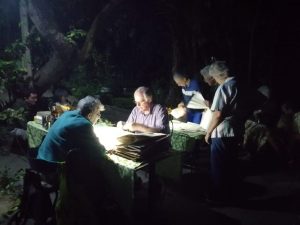
POINTS OF INTEREST (and photos) FROM THE GOKWE AND MAFUNGAUTSI VISIT: 15 TO 18 APRIL 2023 by Mark Hyde
Introduction
Tony asked me to highlight any features of the Tree Society visit to the Gokwe / Mafungautsi Plateau and Forest Reserve that I thought were of interest.
General comments
The first time I visited Gokwe many years ago I was staggered to find that the town is on Kalahari Sand; street tree species are typical Kalahari Sand species such as Baikiaea plurijuga (Zambezi teak) and Schinziophyton rautanenii (Manketti tree), reminding me so much of the Victoria Falls. There was the same experience on this visit but as we headed for our accommodation, the Pumba Safari Lodge, we turned right off the main road and descended from the Plateau into miombo woodland with no Kalahari Sand species.
Although the main target of interest for our visit was the Kalahari Sand area of the actual Forest Reserve, quite a number of places where we botanised, specifically, our Lodge, the waterfall (the Mbumbusi Falls) and the area near Sengwa Dam number 2 were not on Kalahari Sand and were miombo woodland. In fact, it was quite easy as we drove around to tell from the tree species whether we were on the Kalahari Sand or not.
Within the Forest Reserve itself, the woodland was quite open. I was surprised by how little ground cover there was; miombo woodland at this time of year would show many species, typically legumes, and very few plants at all were seen here. Perhaps this is because of the lower rainfall of the area; although per Mudekwe, J, (2007) this is 680 mm per annum which is not particularly low. The altitude of the Reserve was also quite high at about 1250 m, only 250 m below Harare.
Another common habitat was the many vleis snaking through the Reserve and it seemed that the roads often took us along the interface between the Kalahari Sand woodland and the vlei edges. Most of the vleis were quite spacious, tree-less and mainly pretty dry. Some vlei species are discussed later in this article.
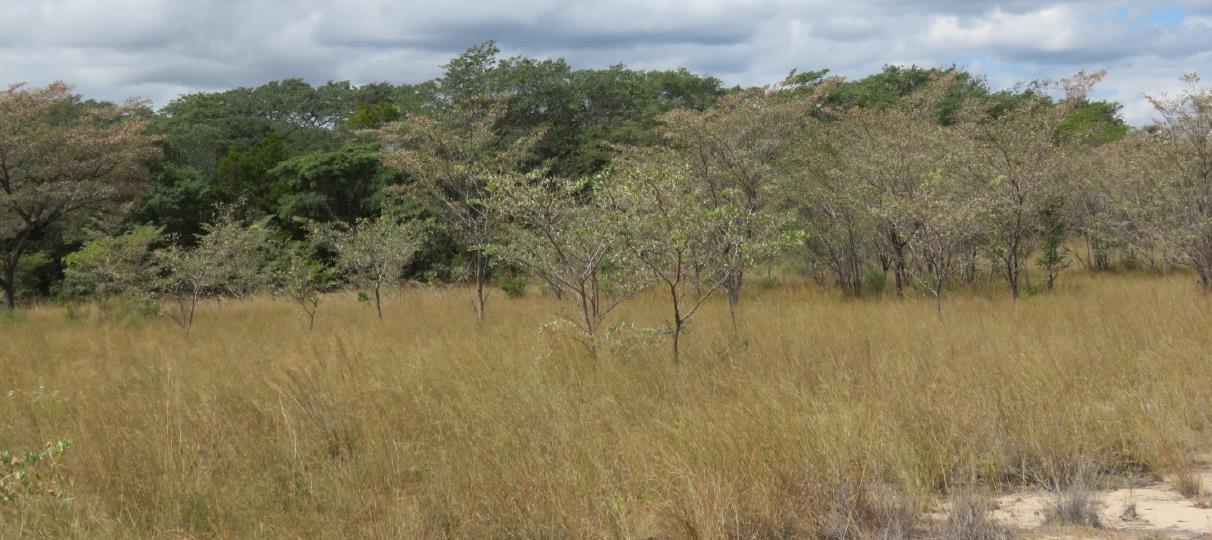
Species on the Kalahari Sand
Living in Harare where we are distant from any Kalahari Sand, we don’t often see the typical Kalahari Sand species, apart from a few cultivated in the Botanic garden. and it was a pleasure to re-acquaint ourselves with Baphia massaiensis (Sand camwood), Baikiaea, Bauhinia macrantha (Kalahari bauhinia), Combretum collinum subsp. ondongense (Kalahari bushwillow), Erythrophleum africanum (Ordeal tree) and Schinziophyton.
Other more familiar species of the Kalahari Sand were Burkea africana, Bobgunnia madagascariensis (Snake bean), Euphorbia matabelensis, Ochna pulchra, Pterocarpus angolensis (Mukwa), Securidaca longepedunculata, Strychnos cocculoides… and, quite frequently, msasa, Brachystegia spiciformis.
An exciting find was Paropsia brazzeana, (the weirdly named Kalahari green-bubble) very much a typical Kalahari Sand species, here for the first time for me it was in creamy-white flower. It is a very attractive shrub with alternate, toothed leaves. Its family is unusual, the Passifloraceae (Passion-flower family) containing species such as the Granadilla which are more usually herbs or climbers. Flowers of the family possesses a third row of structures in addition to the calyx and petals, known as the corona.
Another nice find was Strychnos pungens (Spinyleaved monkey-orange). The leaves are narrow and the three veins from the base which are typical of Strychnos leaves are particularly prominent. The specific name ‘pungens’ does not in this case refer to anything smelling strongly on the plant; it is an alternative meaning of pungent, meaning sharply pointed and, indeed, the leaf apex does have an unusually long apical point.
Polygala kalaxariensis – this very pretty blue-flowered perennial herb was first spotted by Cathy Sharp who brought me a specimen. One feature is that the stalks bearing the mature fruits reflex as the fruit matures. This species was new to me and seems to have been rarely collected in Zimbabwe. Oddly, it is not confined to Kalahari sand as it also occurs in the sandy suburbs of southern Harare, as demonstrated by old herbarium collections, although I personally have never seen it.
Another species of interest was Vitex mombassae (Smelly-berry fingerleaf). Both Meg and I have very rarely seen this species in the field. Although each leaf has 5 leaflets, typically a high proportion of the leaves has only three and this was the case here.
Flora Zambesiaca divisions
As an aside, in case people are not familiar with them, the Flora Zambesiaca project divided Zimbabwe into 5 divisions, labelled N, W, C, E and S, roughly corresponding to compass points. The di-visions are shown on the map.
The flora of Zimbabwe is quite well-known, and it is not easy to find species which are new to a particular division.
Gokwe lies in the northern division and on this trip, we found two species new to that division.
The first was the flowering orchid with the large inflorescence which was growing at the waterfall site. This was identified via Rob Jarvis as Bonatea steudneri.
The other interesting novelty was a small suffrutex Rubiaceae. There were no flowers or fruits but the leaves which were borne in both pairs and whorls of three and which also were a good match with specimens at the Herbarium strongly suggest that this was Vangueria ferruginea. It was formerly known as Ancylanthos rubiginosus, which is the name we are still using on our website: https://www.zimbabweflora.co.zw/speciesdata/ species.php?species_id=156170. It is an unusual Vangueria of the Kalahari Sand with orange-yellow flowers.
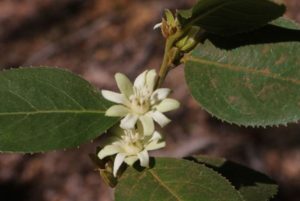
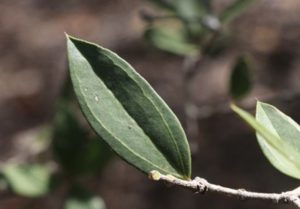
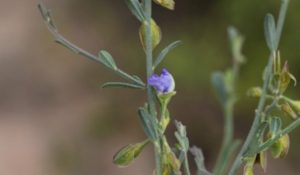
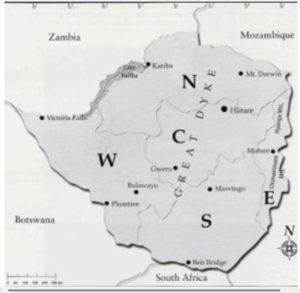
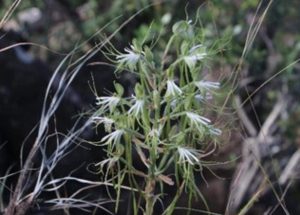
The waterfall (Mbumbusi Falls)
As Rob Jarvis has already remarked, we anticipated a waterfall, but there was none. There was a small rocky valley which fell steeply into a much deeper valley, but no water was present. Surrounding the “falls” was some rocky miombo woodland (not on Kalahari Sand) which we explored. There was a fair number of species seen, although nothing was particularly unusual, apart from the aforementioned orchid.
One plant which puzzled us at the time was a tall bushy pavetta. This turned out to be the familiar Pavetta schumanniana and an odd-looking Psydrax livida turned out to be just that. There were also plants of Bauhinia petersiana, as distinct from the Kalahari sand species, Bauhinia macrantha which we saw elsewhere.
The bottom of the valley contained a fine colony of Senna didymobotrya (Peanut butter cassia). This species is indigenous to Tropical Africa, a fact I had forgotten at the time. This dense colonisation of a favourable habitat suggests an alien species but it seems not in this case. We came across large colonies of it again in another stream bed on the Monday.
Vlei species
One was the Dwarf custard-apple, Annona stenophylla subsp. nana which formed patches of approximately knee-high stems and puzzled us a lot at first. There was also plenty of the patch-forming Parinari capensis
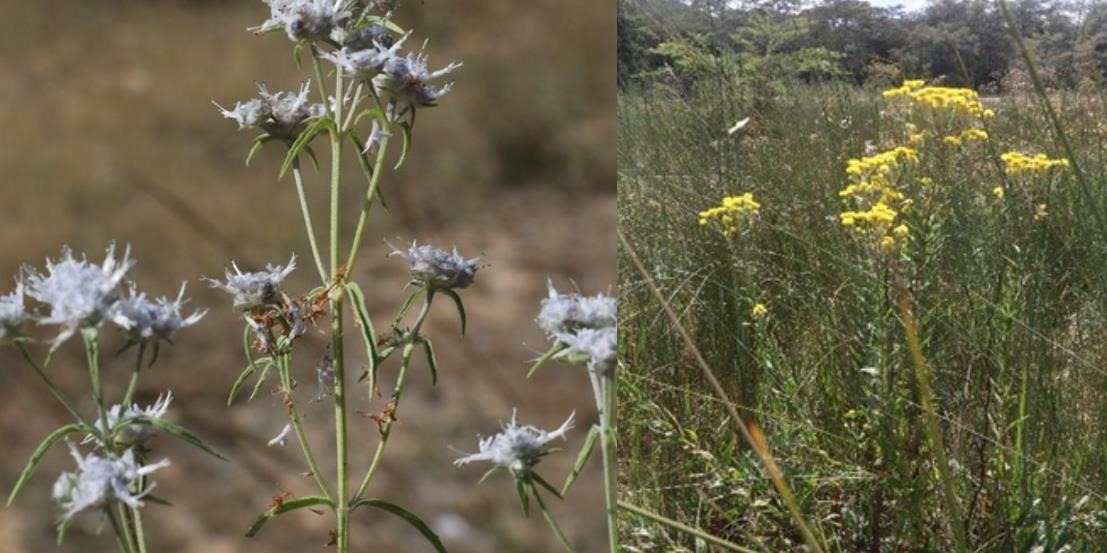
There were also the pretty blue flowers of Haumaniastrum sericeum. In the one wet vlei there was a striking yellow plant of Helichrysum cooperi in full flower.
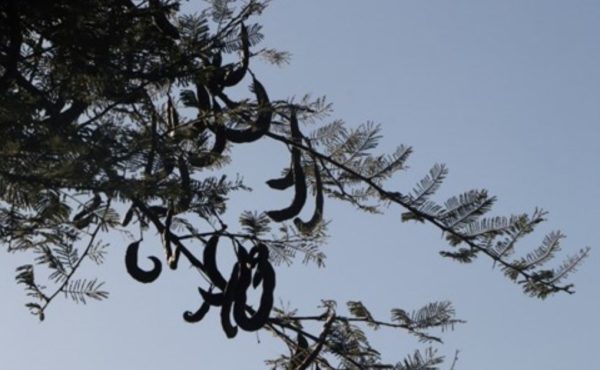
The great Vachellia (Acacia) luederitzii controversy
On the Saturday, the day of our arrival, a large group went off to the Sengwa Dam no. 2 to botanise; I stayed with another smaller group who listed trees around the lodge. The travelling group returned with a most unusual-looking specimen of a Vachellia. This had thick pods, resembling those of Vachellia sieberiana, but these were in many cases strongly curved. Furthermore, there was great variation in the spines, some long, some short and some curved and prickle-like. The picture shows some of the curled pods.
The immediate question was – was it Vachellia luederitzii? This is a Kalahari Sand species, quite rare in Zimbabwe which has the same variation in spine shape as our tree. Quite a fierce debate took place at the time and subsequently over the specimens in the Herbarium. In the end it was decided that the plants were Vachellia sieberiana var. woodii, which is of course a very common species and not a very exciting conclusion.
To reach that decision one has to accept the variability of the spines of Vachellia sieberiana.
Also sieberiana pods are not normally strongly curved; in fact, we found no specimens in the Herbarium with strongly curved pods at all. It was speculated that the Gokwe pods had been attacked by a gall which had produced the unusual shape.
As a postscript to this discussion, on 27 May 2023, I visited the Mukuvisi Woodland for Meg’s talk and I noticed that a Vachellia sieberiana in the carpark had very similar curved pods. I think this supports the conclusion that the Gokwe plants were sieberiana. It also appears that curved pods are commoner than we thought.
Unnamed specimens
Meg Coates Palgrave and I made a collection of any plants which we could not identify at the time and, in two sessions at the National Herbarium, we managed to identify all but a few of the collections. A spreadsheet of all the records has been compiled and circulated to those who attended.
Five specimens require further work. The shrubby Grewia we saw on the walk from the Forestry HQ and which we named at the time as Grewia decemovulata is definitely not that and despite a lot of effort remains unnamed. Perhaps it is a strange form of Grewia bicolor? There is an unknown Searsia and also 3 herbaceous plants which will require careful keying out.
Reference
Mudekwe, J. (2007) Management Practices. Teak forests of Western Zimbabwe.
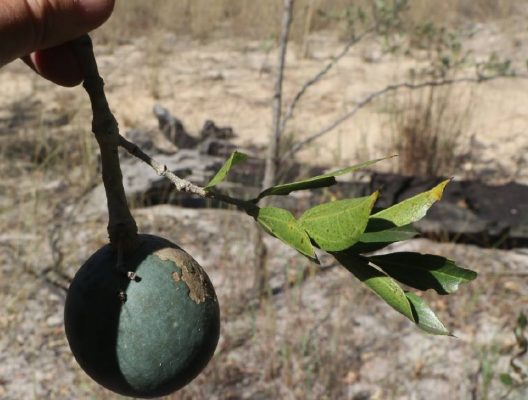
Photo left shows the bluish-green fruit of Strychnos pungens. Photo by Mark Hyde
Below is a picture of Brachystegia woodland on the summit of Buchwa Mountain looking south.
Photo: Rob Jarvis
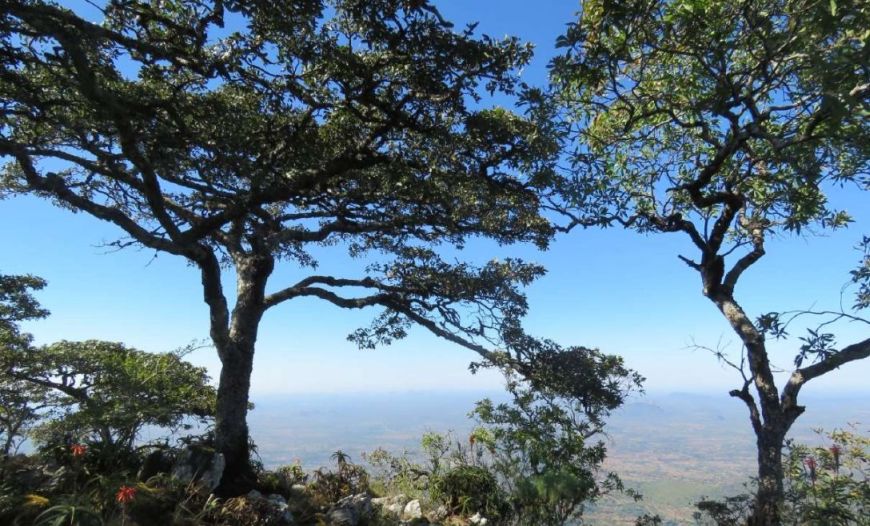
The quest for the fossil trees: by Jan van Bel
After the very exciting and endless recording of trees yesterday, which had people retiring to bed early, it was a wonder that everyone was already up at 6 am to start another excursion. By 7 am we were all queuing in front of the breakfast room and waiting for our names to be called out to go and receive our plate. Staff had improved their system so that the process went a whole lot faster than the day before. We had our English breakfast and by 8 am we were on the road.
Today we hoped to see some tree species which should grow around here but had eluded us yesterday. To begin with, our gurus were still looking for the Acacia (Vachellia) luederitzii, which is at home in the Kalahari sands. So we drove in convoy back through Gokwe centre to the national parks office to pick up some park wardens. One of them was going to show us a spot where we could possibly find our elusive luederitzii. We went deeper into the Mafungautsi National Park and parked at a large building from the Parks officials. The weather was perfect again, not too hot nor cold . It was very dry so that the park’s name didn’t do itself justice (Mafungautsi : a misty place). We parked under an old Baphia massaiensis, jasmine pea, with a very contorted and prostrate stem. We were now getting quite familiar with this tree species after seeing plenty of them yesterday.
We followed our warden over a well-maintained path through a forest with an interesting variety of trees of which the oldest and highest ones were msasa. Arriving at the tree that the warden pointed out we saw Meg, who was dropped there by car, negotiating her way with her ambulator to station herself under it. We were now at the border of a dry vlei where 4 or 5 of the same acacia species were growing. Not many other species were seen there. Counting pinnae and leaflets and looking at the thorns and the pods that did not look like any in the books, no conclusive identification could be arrived at. Most features pointed in the direction of sieberiana species. Being quite familiar with Vachellia sieberiana, maybe the most common acacia tree around Harare, the pods of these acacias in this spot were curled to very curled, while we know the sieberiana to have straight pods. Thickness and size, colour and weight were all as expected of a sieberiana pod. We found some hooked spines besides the mainly long straight spines. The presence of these 2 types of spines could point in the direction of luederitzii species, but our tree here had more pinnae than the books mention. So after a small hour, we still couldn’t conclusively name it. Maybe Mark and Meg will expound on this.
Next on the program was the quest for the fossil forest. Named for the petrified logs from the Triassic age (some 220 million years old) that can be seen lying there. So we went back to the cars and started driving through tight paths with trees and shrubs brushing the sides of the cars. The slow pace for negotiating these paths allowed us to do some drive-through botanising, picking leaves through the windows. We were still hoping to find the Grewia retinervis with its reticulate veining, which has its home here in the Kalahari sands. We also wanted to see more Strychnos pungens and here there were many. Yesterday we only saw one. This Strychnos pungens, spine-leaved monkey orange, has remarkable bluish-green fruits and a spine at the leaf apex. We now were very familiar with Paropsia brazzeana, after our initial discovery yesterday. These bushes now appeared everywhere. An Acacia, (Vachellia) gerrardii, grey-haired acacia here was also not recorded yesterday.
We then stopped at the side of a vlei where Mark spotted some interesting shrubs next to a patch of Senna didymobotrya, peanut butter cassia, with its ostentatious display of yellow flowers. After some more driving, we stopped again on the side of a big forest. Our guard wanted to show us a huge mukwa tree which proved to be an impressive Burkea africana, wild syringa . It was now lunch time and people started putting out camping tables and chairs. After our lunch, everyone started ambling around without much direction.

Fossilised, hollow log and friendly butterflies at lunchtime. Photos: Rob Jarvis
Cathy, our mushroom specialist, came back with a few dry mushrooms. Even Meg with her ambulator was negotiating her way through the brush. Peter meanwhile was still studying the map to find the best way to get us to the fossil forest.
On the road again over sandy paths between Mopani, Acacia, Parinari and Lantana, we still had to go a long way. The road was now wider and we were driving over undulating sandheaps reminiscent of the dunes along the coast. The fine sand was now making the driving slippery. At one time having to go back and forward several times to be able to pass a broken-down vehicle.
It was late and we were wondering if this long trip with all that bumping up and down was going to get us anywhere at all.
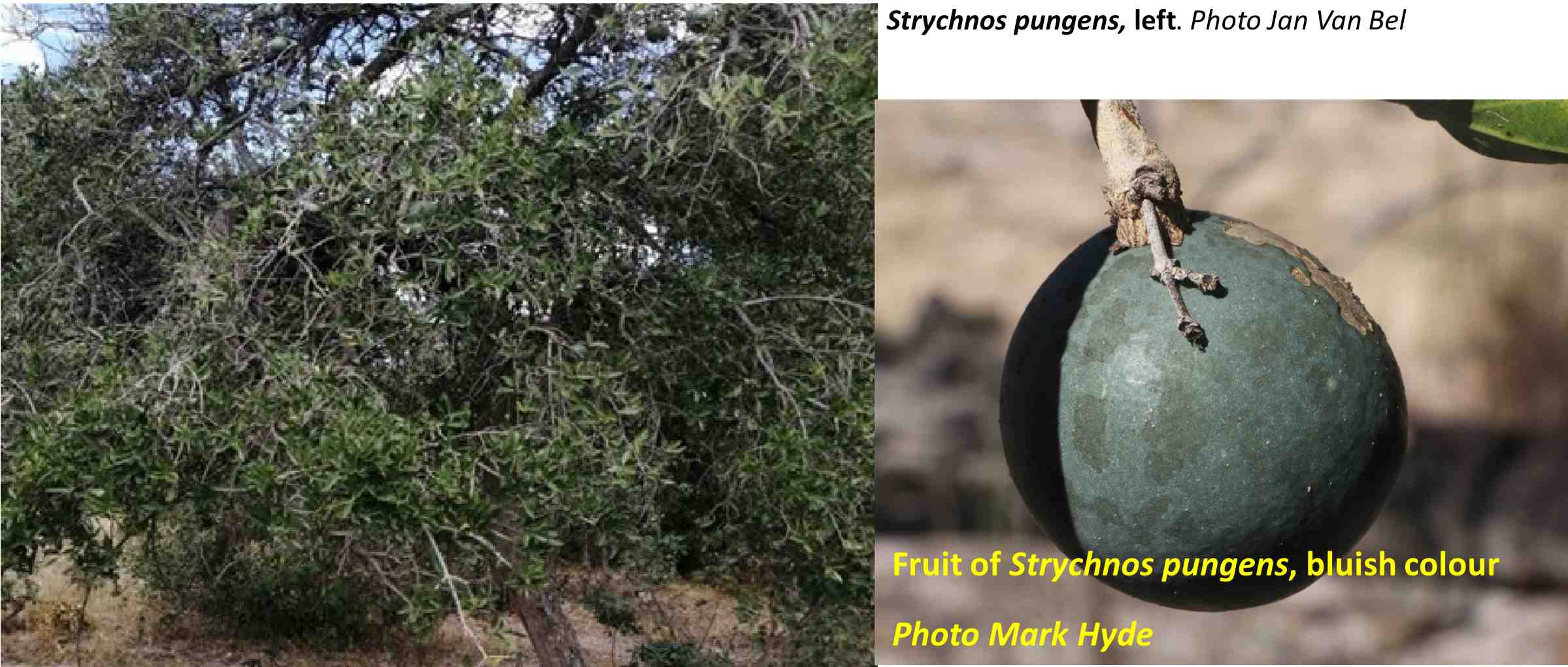
Arriving at a small growth point, with a few shops, we went off the main road and were directed by some locals to follow a path a little further. Getting stuck after a few meters and seeing no paths, we had to turn back. A second inquiry directed us to go back to the main road and proceed a little further before turning off.
It was now getting critically late, considering the bad roads we still had to negotiate to get to our lodgings where they were preparing dinner. Not trusting the directions we were given by the locals, we decided to abandon our quest. We waited for Rob and Sheila who had been in front to turn back. After 15 min. still no sign of them. It was now 17.35h and we had to turn back. Luckily there was a shorter road to get back and we arrived at our lodge at 19.30h.
Braai meat was waiting on the grill and proved to be already too dry. But with a big bottle of beer and being very hungry, no one complained. Rob and Sheila (they also had Ryan in their car) had arrived 15 min later and told us they had found the fossil logs. They showed us the pictures they took. Their absence had everyone worried, so we were happy to see them, but now being tired we also felt jealous of their success and a bit stupid also for having abandoned the quest only half a km too early.
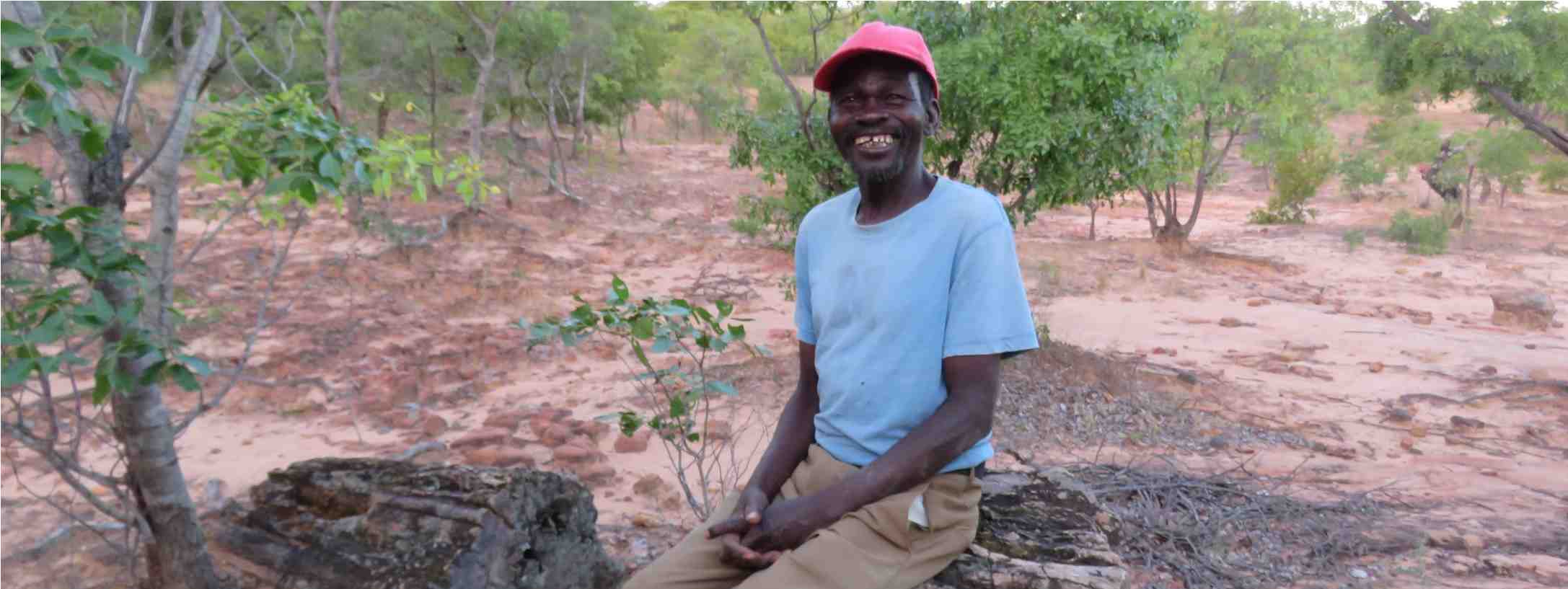
Most of the trees seen on our Gokwe trip are now listed below
Acacia erubescens, Acacia gerrardii gerrardii, Acacia nigrescens, Acacia polyacantha campylacantha, Acacia sieberiana woodii, Acacia tortilis spirocarpa, Acalypha amentacea wilkesiana, Adenia gummifera gummifera, Albizia antunesiana, Allophylus africanus, Ancylanthos rubiginosus, Annona stenophylla nana, Asparagus laricinus, Azanza garckeana, Baikiaea plurijuga, Baphia massaiensis obovata obovata, Bauhinia macrantha, Bauhinia petersiana, Bobgunnia madagascariensis, Bolusanthus speciosus, Boscia angustifolia corymbosa, Boscia salicifolia, Brachystegia boehmii, Brachystegia spiciformis, Bridelia cathartica melanthesoides agg, Burkea africana, Caesalpinia decapetala, Cascabela thevetia, Casimiroa edulis, Cassia abbreviata beareana, Catunaregam taylorii, Citharexylum spinosum, Citrus x limon, Colophospermum mopane, Combretum apiculatum apiculatum, Combretum collinum agg, Combretum collinum ondongense, Combretum hereroense hereroense, Combretum imberbe, Combretum molle, Combretum mossambicense, Combretum zeyheri, Commiphora africana agg, Commiphora mossambicensis, Coptosperma neurophyllum, Cordyline fruticosa, Crotalaria pallidicaulis, Dalbergia melanoxylon, Desmodium tortuosum, Dichrostachys cinerea, Diospyros kirkii, Diospyros lycioides sericea, Diplorhynchus condylocarpon, Distephanus divaricatus, Dodonaea viscosa angustifolia, Dombeya rotundifolia, Duranta erecta, Ehretia obtusifolia, Erythroxylum zambesiacum, Erythrophleum africanum, Euclea divinorum, Euphorbia cotinifolia, Euphorbia matabelensis, Euphorbia pulcherrima, Fadogia ancylantha, Faurea saligna, Ficus binnendykii binnendykii,, Ficus benjamina benjamina, Ficus burkei, Ficus elastica, Ficus verruculosa, Flacourtia indica, Flueggea virosa virosa, Friesodielsia obovate, Gardenia resiniflua resiniflua, Gardenia ternifolia jovis-tonantis goetzei, Grewia flavescens flavescens, Grewia monticola, Grewia sp. (not decemovulata), Gymnosporia buxifolia, Hexalobus monopetalus, Kalanchoe beharensis, Jatropha curcas, Julbernardia globiflora, Lantana camara, Leucaena leucocephala, Maerua angolensis, Maerua juncea agg, Mangifera indica, Margaritaria discoidea nitida, Melia azedarach, Monotes glaber, Moringa oleifera, Ochna pulchra pulchra, Ochna schweinfurthiana, Ormocarpum kirkii, Ozoroa reticulata, Pappea capensis, Parinari capensis capensis, Parinari curatellifolia, Paropsia brazzeana, Pavetta schumanniana, Pericopsis angolensis, Philenoptera violacea, Phoenix reclinata, Piliostigma thonningii, Pittosporum viridiflorum viridiflorum, Protea gaguedi, Pseudolachnostylis maprouneifolia agg, Psidium guajava, Psydrax livida, Pterocarpus angolensis, Pterocarpus rotundifolius martinii, Schinziophyton rautanenii, Searsia longipes longipes, Searsia sp., Securidaca longepedunculata, Senna didymobotrya, Senna singueana, Senna spectabilis, Solanum campylacanthum ‘incanum type’, Steganotaenia araliacea araliacea, Strychnos cocculoides, Strychnos pungens, Strychnos spinosa, Syzygium guineense guineense, Tecoma stans, Terminalia brachystemma brachystemma, Terminalia sericea, Terminalia stenostachya, Turraea nilotica, Uapaca kirkiana kirkiana, Uapaca nitida nitida, Vangueria infausta infausta, Vernonia adoensis agg, Vernonia colorata colorata, Vitex mombassae, Vitex trifolia bicolor, Ximenia caffra caffra, Ziziphus abyssinica, Ziziphus mucronata.
Whilst on our travels around Gokwe, we encountered a few emergency taxis carrying passengers on top of the vehicles as all the passenger seats were already fully occupied. The people didn’t have much of a choice – you either ride on top of a taxi or walk home. Obviously there is a serious shortage of transport in the area!
